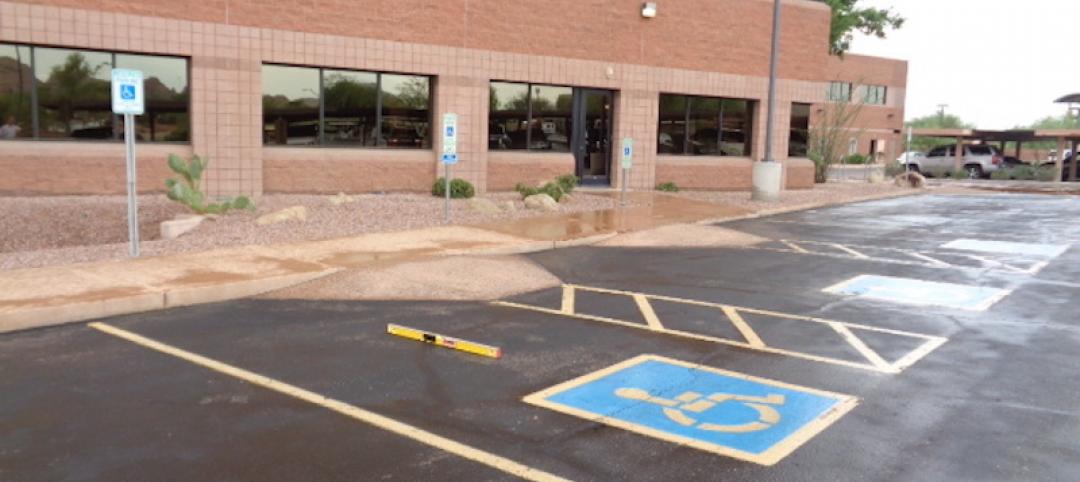Equal parts colleague and confidant, the trusted advisor is a valuable asset in the world of business. Particularly in the demanding realm of architecture, engineering, and construction industries, a person who brings a high level of professional expertise and personal empathy to the team can play a major role—albeit one that’s typically behind the scenes—in shaping a successful practice and project.
Unlike a consultant who performs specific services to achieve a defined objective within a fixed time frame, a trusted advisor acts as a guiding partner over the full course of a professional relationship. By focusing on an in-depth understanding of the needs of the client, and selectively applying their experience, his or her steady influence can be felt on many levels and across many projects. Carefully designed over time, the relationship between a trusted advisor and their client has a tenure that extends beyond the terms of any contract.
A trusted advisor brings unique added value to a relationship; as it is based upon cumulative, personal experiences, it can not be replicated by competitors. Because an advisor has earned the trust of clients, they have access not only to their business plans but to their emotions and aspirations as well, giving the advisor exceptional and deep insight into the more complex aspects of a client’s character.
In addition to enjoying repeat business from their current roster of clients, trusted advisors occupy an advantageous position when it comes to acquiring new accounts. Personal recommendations, strategic introductions, and word-of-mouth referrals made by satisfied clients are the ways trusted advisors are able to expand their business. This allows them to avoid the time, expense, and low return rate involved in cold-calling and other conventional lead-development legwork.
As the title implies, a client can expect their trusted advisor to provide constructive counsel on major decisions. Because an advisor is the antithesis of the proverbial “yes” person, clients rely on them for honest, balanced, and informed appraisals. Feedback, pro and con, should be freely dispensed as part of an ongoing dialogue. In addition, some trusted advisors call their clients’ attention to new business opportunities, even if their primary service to the client is not business development. Of course, when discussing sensitive matters or proprietary information, a client should be secure in the knowledge that their trusted advisor will always maintain confidentiality. Above all, a trusted advisor holds their relationship with the client as the top priority.
Perhaps the most important thing to know is that you don’t suddenly become a trusted advisor by reading a book or attending a seminar on the subject; it is a recognition that is earned over time and given by others to you. There are, however, several actions you can take every day to culture confidence among your community of professional colleagues and raise your profile as a trusted advisor:
Make going the extra mile a daily practice. It’s easy to fulfill the checklist of contractual obligations, but proactive behavior will help you stand out from the crowd. Offer your clients expertise beyond nominal service and share any insights germane to their business. Take the initiative to troubleshoot possible challenges on behalf of clients.
Put your clients’ interests ahead of your own. Protecting your clients’ assets can sometimes mean telling them “no” and steering them away from a project. It can also entail standing up to other partners, in a defensive action. An effective rule of thumb adopted by trusted advisors: Act like the clients’ money is your money.
Don’t just network—consciously craft a support system between people and organizations. Be democratic about your contacts and connect with people at all levels of a company, from the receptionist to the CEO. If you recognize and respect that promising new associate now, you’re more likely to be remembered in the future—once she has moved into the corner office. And when a middle manager jumps to another firm, he’ll be more inclined to pass your name on to his new superiors if you drop him a note of congratulations. Encourage others in your organization to engage in the same way with their peers and contacts.
Build advocacy. A too-often overlooked constituency of networking is advocates. These are people who share your business values and commitments, but are not directly involved in your everyday work. An example: An architect may be impressed by the negotiating tactics demonstrated by representatives of a firm which occasionally performs value engineering on its projects, and mentions that to another architect, who reaches out to them. Endorsements from such tangential sources not only expand your network, but may also lead to new business. Never lose sight of the fact that everyone with whom you come in contact is a potential advocate.
Blur the lines between professional and personal life. Be a friend to your clients by expressing interest in their personal lives as well as offering them advice on a professional level. That said, don’t go overboard with this behavior. If your client senses any insincerity in your conversation—or feels that you are violating their privacy—take a step back. Examples of topics that can safely bridge the gap between business and home life in a neutral way include recommending a new restaurant; offering congratulations on kids’ graduations, weddings, or other family milestones; and sharing opinions on new books or movies.
Stay in touch. Regular communication enhances and strengthens connections. While email and phone calls can be the most efficient way of keeping in contact, remember that there’s still no substitute for face-to-face meetings. Make time to get together for coffee or a quick lunch (and pick up the tab rather than pass the bill on to the client). Don’t forget that communication is a two-way street—being an attentive listener is a vital skill for every professional.
By consciously practicing these principles, you’ll gradually accrue the attributes of a trusted advisor. Combine them with your business expertise and acumen, and you’ll be well positioned to enhance not only the careers of others, but your own, as well.
About Cathy Sewell
With more than 15 years of experience in business development and marketing, Cathy Sewell is an Associate and Business Development Manager for Rider Levett Bucknall (RLB) North America. Responsible for national business development and the implementation of firm-wide strategic initiatives for the North America region, she joined RLB in 2005. A co-founder and past president of the Hawaii chapter of Society for Marketing Professional Services (SMPS), she has served as a judge in several national SMPS awards programs. Cathy holds a BBA in Marketing from Kent State University and an MBA from Hawaii Pacific University.
More from Author
Rider Levett Bucknall | Aug 14, 2023
Fast-tracking construction projects offers both risk and reward
Understanding both the rewards and risk of fast-tracking a project can help owners, architects, engineers, and contractors maximize the benefits of this strategy and can bring great reward on all fronts when managed properly.
Rider Levett Bucknall | May 31, 2022
Checking out: Tips for converting hotels to housing
Many building owners are considering repositioning their hotels into another property type, such as senior living communities and rental apartments. Here's advice for getting started.
Rider Levett Bucknall | Feb 14, 2022
How building owners and developers can get ahead of the next supply chain disaster
Global supply chain interruptions that started at the very beginning of the pandemic are still with us and compounding every step of the way. Below are a few proven tips on how to avert some of the costly fallout should we be faced with similar commercial disasters at any time in the future.
Rider Levett Bucknall | Jul 24, 2019
Design goooals for football stadiums: Lessons from the U.K. and the U.S.
Both professional soccer and football have vigorously pursued targeted global growth.
Rider Levett Bucknall | Apr 30, 2018
Following—and forecasting—the money: Financial modeling for project managers
To wait until there’s a problem affecting design and construction before consulting with a PM wastes valuable time when a project is at its most vulnerable point.
Rider Levett Bucknall | Jan 11, 2018
Harvesting energy and profits: A new approach to MEP cost analysis
In the course of providing cost estimating services, educating the client on making prudent choices is a high priority.
Rider Levett Bucknall | Sep 6, 2017
Following the money: G702 progress payment certifications
There is no single method of calculating progress payments, but the most common formula is the percentage of completion applied to the total contract price, less a retainage which is held by the owner until final acceptance of the project.
Rider Levett Bucknall | May 3, 2017
Avoiding trouble in paradise: Tips on building successfully in the Caribbean
The island setting itself is at the root of several of these disruptive assumptions.
Rider Levett Bucknall | Feb 8, 2017
Don’t leave your office or business vulnerable to drive-by lawsuits
Across numerous states, unscrupulous attorneys are filing hundreds of “drive-by” lawsuits that are founded on noncompliance with ADA regulations against businesses that often have no idea they have done anything wrong.
Rider Levett Bucknall | Nov 10, 2016
Prescription for success: Managing technology in the design of healthcare facilities
While the benefits of intelligently deployed technology are abundantly clear to both designers and healthcare end-users, it’s no simple task to manage the integration of technology into a building program.















